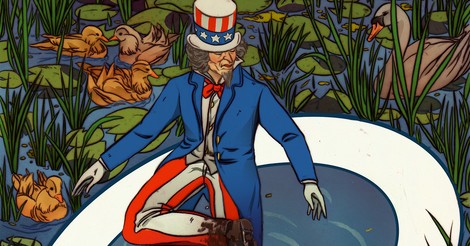Your podcast discovery platform
Curious minds select the most fascinating podcasts from around the world. Discover hand-piqd audio recommendations on your favorite topics.

piqer for: Boom and bust Global finds
German economist with a sense of humor, not just relative to accountants. Chief economist at the London-based Centre for European Reform (CER), recently brexited to Berlin. Former fellow at The Economist, economics PhD at Stockholm University in Sweden. Christian covers European economics and integration and has, as a former Londoner, a pathological interest in the economics of real estate.
Have Central Banks Reached The Limit?
Discussing macroeconomic policies (monetary and fiscal policy, some financial regulation) is often difficult: the topic is very complex (economists disagree violently on these issues), the available texts are dense and hard to understand, and the interest in the topic in the public is not as high as it should be, in my view.
So it's great to have Justin Wolfers put down the argument in a short and very readable text for The New York Times. The basic questions are whether monetary policy (what central banks do, by adjusting the money supply and setting benchmark interest rates) has reached the limit of what it can do; how often we are likely to hit that limit in the future; and whether fiscal policy (higher government spending or tax cuts to stimulate the economy) should jump in more aggressively, and crucially, more automatically than so far.
Part of his answer is yes, indeed, we will hit the zero limit of interest rates more often in the future:
Put these pieces together, and a conservative guess is that in “normal times,” the nominal interest rate — the neutral real interest rate plus inflation — has fallen from around 6 percent to 3 percent. That creates a serious problem for the Fed [the US central bank]. Here’s why: Most recessions can be cured by lowering rates by several percentage points. When interest rates were closer to 6 percent, the Fed could lift the economy with plenty of interest-rate leeway. But when normal interest rates are closer to 3 percent, the Fed can cut rates only a few times, because rates can only go so low — perhaps as low as zero, maybe a tad lower. ... The problem is that a lower bound on interest rates creates a sharp asymmetry in how the economy works: It’s relatively easy for the Fed to cool an overheating economy by raising rates. But when the economy is already cooling down, the central bank may not be able to cut rates enough to prevent a recession or to spur a strong recovery.
Plenty of interesting thoughts in this short piece.
